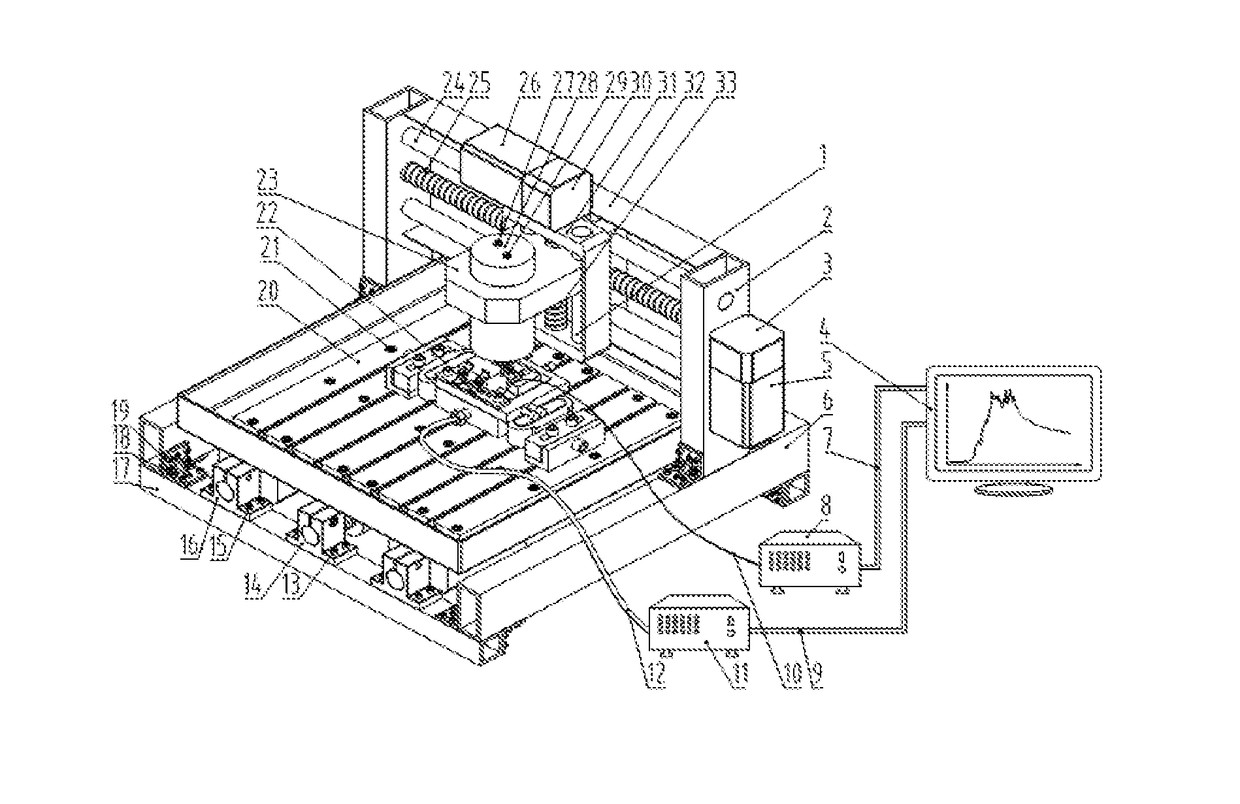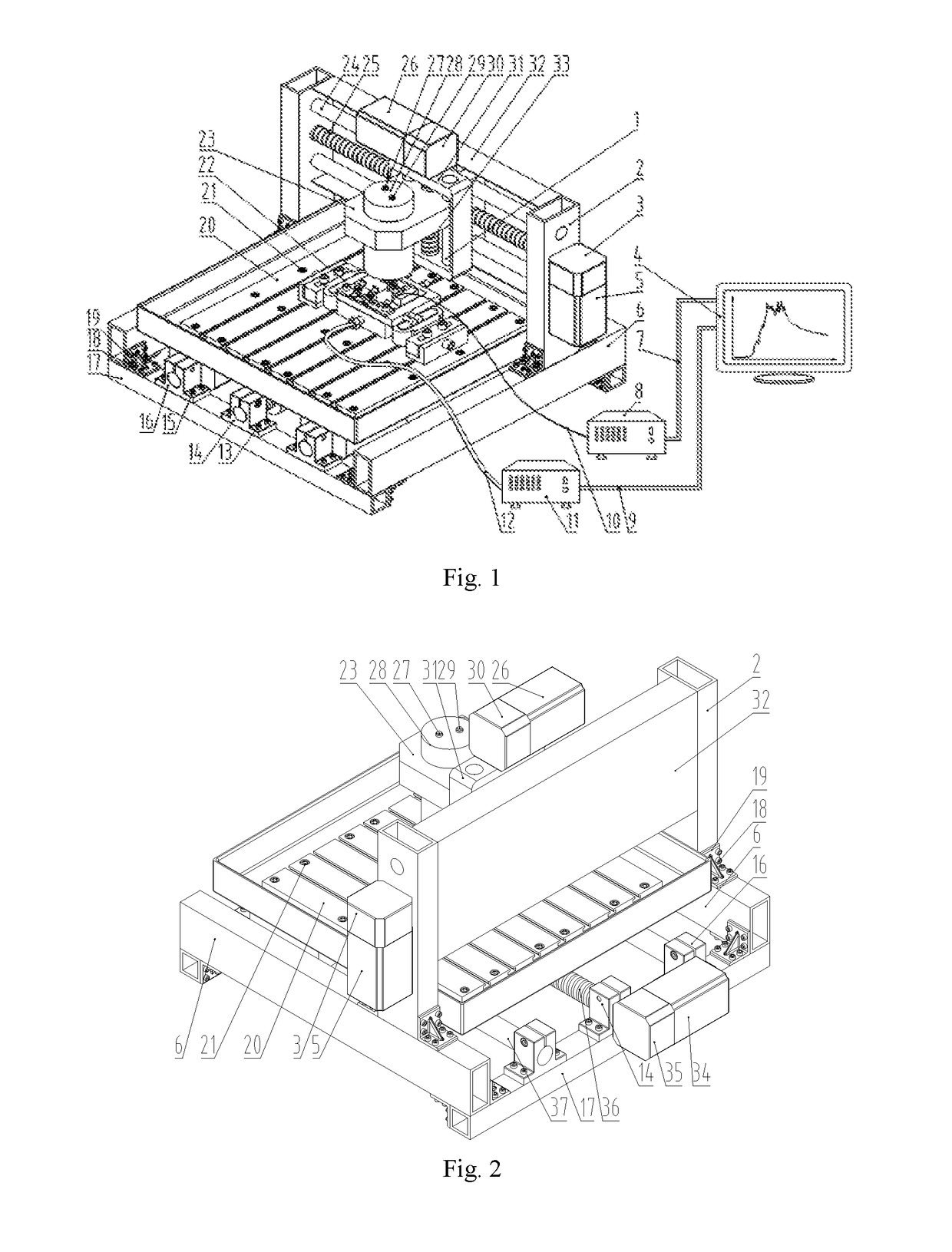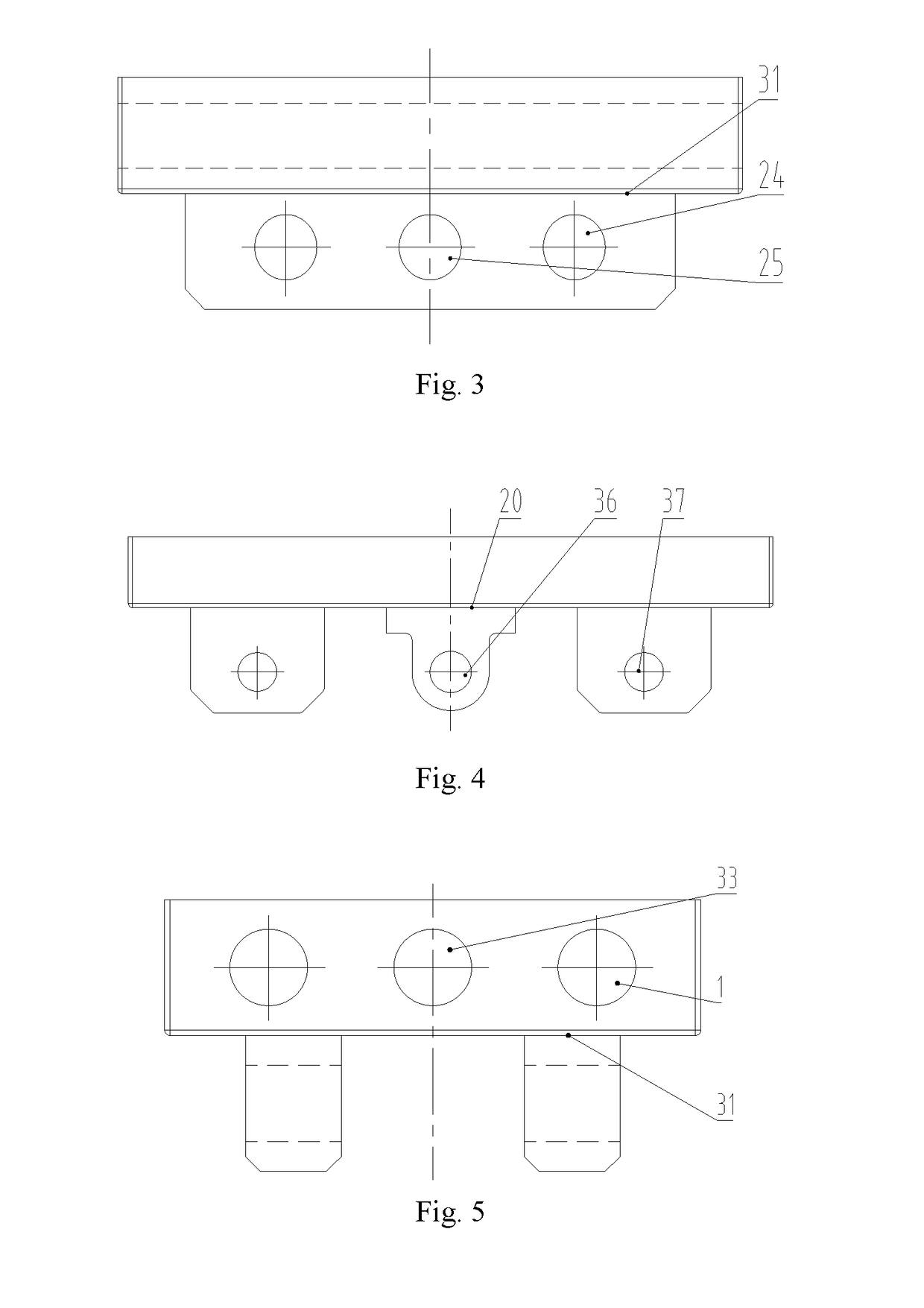Bone surgery grinding experimental device capable of cooling and electrostatic atomization film formation
an experimental device and bone surgery technology, applied in the field of medical equipment, can solve the problems of large heat, bone necrosis and heat injury to surrounding tissues, and the degree of heat injury cannot be controlled, and achieve the effect of reducing the temperature in the grinding area
- Summary
- Abstract
- Description
- Claims
- Application Information
AI Technical Summary
Benefits of technology
Problems solved by technology
Method used
Image
Examples
first embodiment
[0092]the present invention is as shown in FIG. 9, and FIG. 9 is a diagram of a fluid path system in a commonly used drip cooling mode in clinical orthopaedic grinding surgeries. As shown in FIG. 9, the fluid path is composed of a fluid storage tank I 57, a hydraulic pump I 56, a pressure regulating valve I 55 and a throttle valve I 54, which are connected in sequence. The fluid storage tank I 57 is filled with normal saline, the normal saline in the fluid storage tank I 57 is pumped out by the hydraulic pump I 56 and enters the nozzle through the pressure regulating valve I 55 and the throttle valve I 54. An overflow valve I 58 and a recycling bin I 59 form a protection path. As the flow velocity of the cooling fluid in the drip cooling mode is very low, the hydraulic pump I 56 is a variable frequency water pump, and the flow thereof can be controlled by regulating the pressure to obtain an ideal flow velocity.
[0093]The second embodiment of the present invention is flood cooling, t...
third embodiment
[0094]the present invention is MQC, and the used nozzle is a pneumatic atomizing nozzle. FIG. 10 is a diagram of fluid path and gas path systems, and the principle of the MQC can be illustrated in combination with FIG. 11, and involves a fluid path, a gas path and the nozzle. As shown in FIG. 10, a fluid storage tank II 71 is filled with normal saline, and high pressure gas and the normal saline are mixed in a nozzle body 77 (FIG. 11). The gas path is composed of an air compressor 68, a filter 67, a gas storage tank 65, a pressure regulating valve II 64, a throttle valve III 63 and a turbine flowmeter II 62, which are connected in sequence, and the fluid path is composed of the fluid storage tank II 71, a hydraulic pump II 70, a pressure regulating valve III 69, a throttle valve II 61 and a turbine flowmeter I 60, which are connected in sequence. During working, the hydraulic pump II 70 is started, the normal saline stored in the fluid storage tank II 71 enters a fluid injection cha...
fifth embodiment
[0096]the present invention is a nanofluid phase change heat transfer grinding head, and FIG. 12 is a working principle diagram thereof. As shown in the figure, the nanofluid phase change heat transfer grinding head consists of a hollow shaft, and can be divided into an evaporation segment, a heat insulation segment and a condensation segment, and has a hollow cavity having an initial vacuum degree therein and being filled with a proper amount of nanofluid. When the rotating speed is high enough, the nanofluid rotates with the grinding head and covers an inner wall surface of the hollow cavity in the grinding head to form an annular fluid film. The grinding area is heated when the grinding head is working, so the nanofluid base fluid in the grinding area will be evaporated, the fluid film becomes thinner, and the generated steam will flow to the other segment (i.e., the condensation segment) of the hollow cavity in the grinding head. The steam releases heat at the condensation segme...
PUM
| Property | Measurement | Unit |
|---|---|---|
| temperature | aaaaa | aaaaa |
| size | aaaaa | aaaaa |
| taper angle | aaaaa | aaaaa |
Abstract
Description
Claims
Application Information
 Login to View More
Login to View More - R&D
- Intellectual Property
- Life Sciences
- Materials
- Tech Scout
- Unparalleled Data Quality
- Higher Quality Content
- 60% Fewer Hallucinations
Browse by: Latest US Patents, China's latest patents, Technical Efficacy Thesaurus, Application Domain, Technology Topic, Popular Technical Reports.
© 2025 PatSnap. All rights reserved.Legal|Privacy policy|Modern Slavery Act Transparency Statement|Sitemap|About US| Contact US: help@patsnap.com



